Artists
Hélène Delprat ‘Disappeared’ from the Art World 30 Years Ago. Now, She’s Back With a Fervor
Hauser & Wirth is now representing Delprat alongside Christophe Gaillard—the latter helped convince the artist to return to the stage.
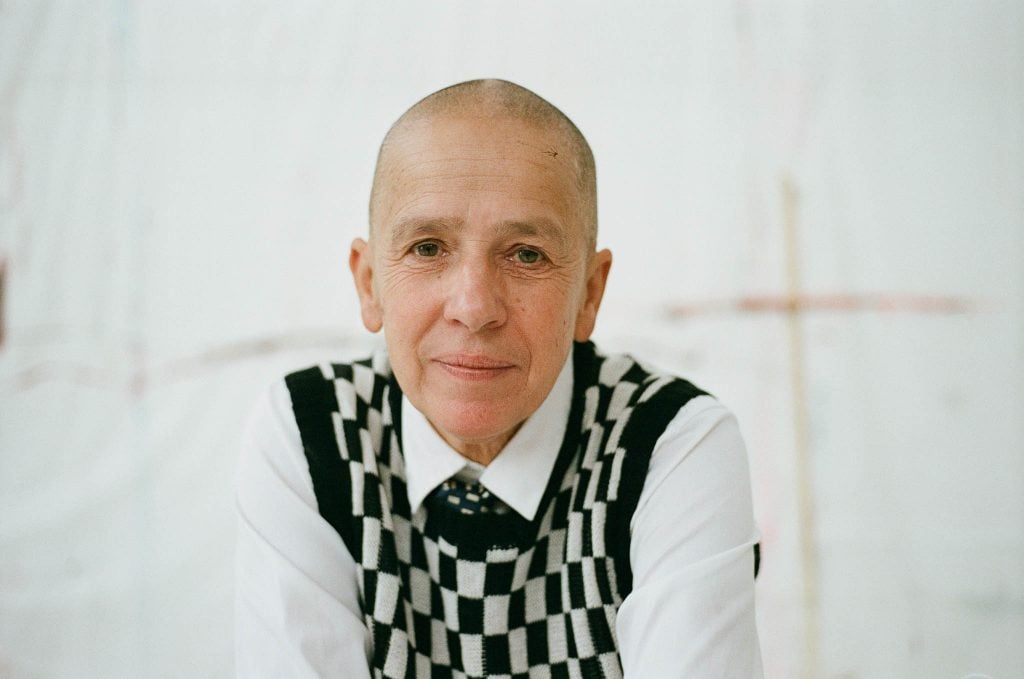
“Blue is not a color that I like at all,” said Hélène Delprat, standing in front of a large, unfinished canvas smothered in swaths of blue acrylic. The French artist born in 1957 said she does, however, like being pulled out of her comfort zone.
The despised color is now part of the underpainting—it was a warm-up. “I have to react … and I don’t want to resemble myself,” she said, so the blue-paint “ruse,” as she called it, kept her on her toes. “If you’re just repeating things, it means you have a single aesthetic, which bores me. The only problem is, it’s very hard, maybe even impossible, not to resemble yourself. It’s a fantasy,” she said, sitting in her large, unheated studio with a leaky roof, tucked behind old train tracks northwest of Paris.
For that matter, Delprat said she prefers minimalist paintings like Barnett Newman’s, which are nothing like her own. (Her 2017 exhibit at Galerie Christophe Gaillard in Paris was titled: “I, who love Barnett Newman, it’s safe to say we’re not even close.”)
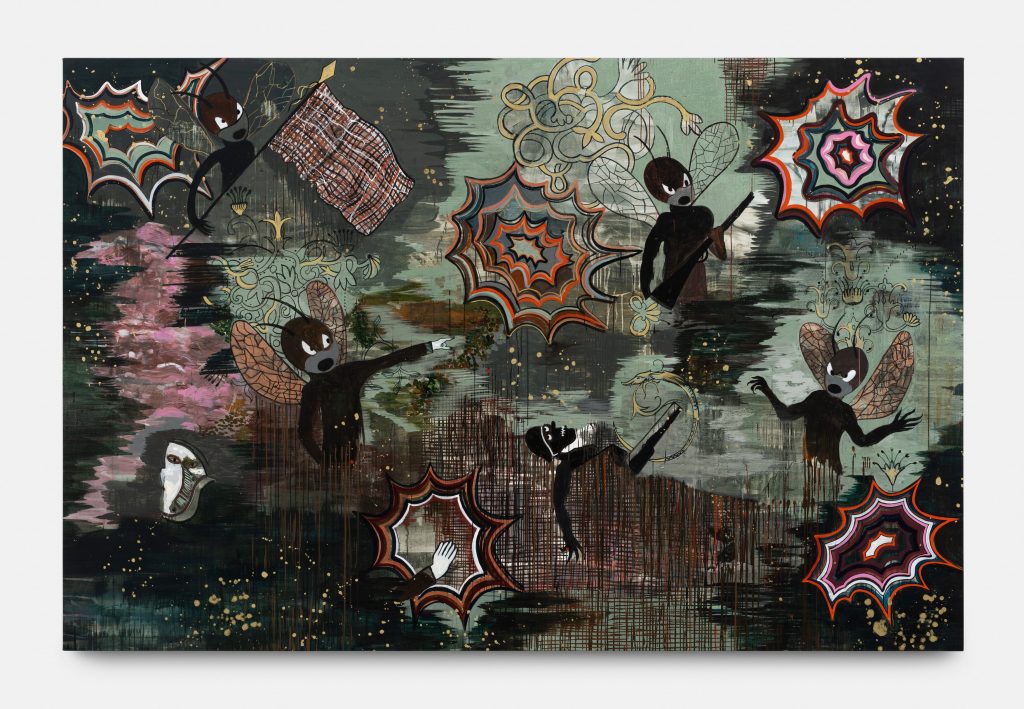
Hélène Delprat Peinture – catastrophe (2023). Pigment, acrylic binder and glitter on canvas. © Hélène Delprat, ADAGP, Paris, 2024. Courtesy the artist and Hauser & Wirth. Photo: Nicolas Brasseur
Despite her efforts, and while far from being repetitive, Delprat’s paintings, theatrical installations, sculpture, and film, are recognizably her own. This has not bothered art lovers and collectors, who, after years of paying relatively little attention to the artist outside local circles, have been lining up to acquire pieces. Indeed, Delprat appears to be finally getting her due with the recent announcement of representation by Hauser & Wirth, and a debut solo exhibition at their new Paris space. Titled “Monster Soup,” it is on view until March 9.
The art world can’t be entirely blamed for overlooking the artist, who remains less known outside Europe—a fact the Swiss mega-gallery will likely help change. Delprat herself “disappeared” from the art world, when she quit her former Galerie Maeght in 1995 and didn’t exhibit for nearly 20 years, before beginning her comeback with Galerie Christophe Gaillard in Paris, and a first solo show there in 2014.
“There is nobody who paints like her today. At least not in France,” said Christophe Gaillard, with whom Delprat will continue working. Her creations, “are incredibly free,” he said during an interview in his Paris gallery.
They are also anything but minimalist. Her paintings are brimming with burlesque condensations of encyclopedic references in figurative and abstract forms, inspired by everything from ancient Greek and Renaissance culture to recent news, as well as phenomena she “hunts” online, in books, and film. World Wars and military iconography are recurring subjects. Clashing, comical forms can appear even “disgusting,” in her words, yet they are paradoxically inlaid with ornamental elements of elegance. She refers to this as “serio ludere,” a Renaissance term meaning to “play seriously,” which is central to her practice.
Delprat applies all this in a kind of stream-of-conscious, ordered disorder, where forms come and go. With their dreamlike undertones, her paintings can have a darkly magical quality. From these depths, a world that is anything but monochrome slowly emerges.
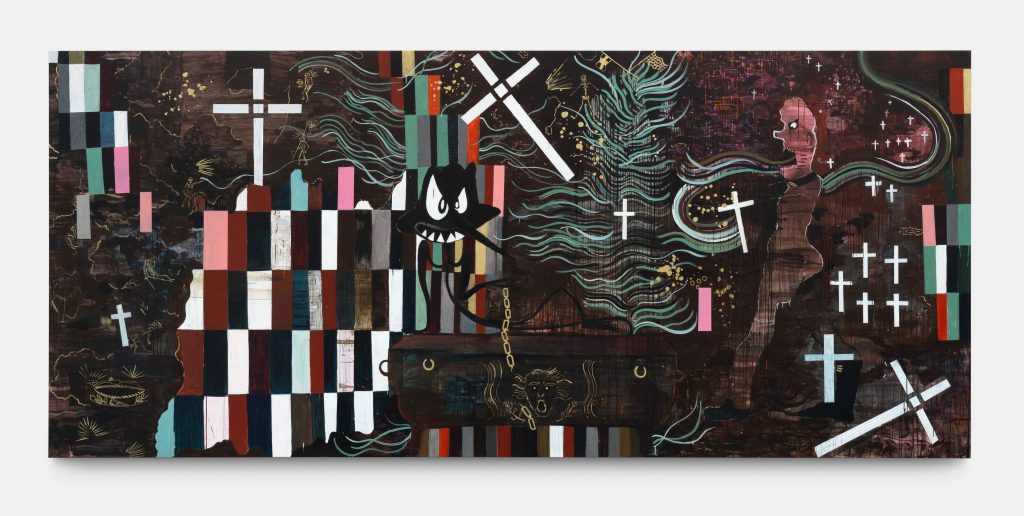
Hélène Delprat J’accuse (2023) Pigment, acrylic binder and glitter on canvas 250 x 566 x 4 cm / 98 3/8 x 222 7/8 x 1 5/8 in © Hélène Delprat, ADAGP, Paris, 2024. Courtesy the artist and Hauser & Wirth. Photo: Nicolas Brasseur
In addition to paintings, the Hauser & Wirth show includes some film, a sculpture, carpets, and wall installations in fire-orange-line patterns replicating designs that Paris shop owners made out of tape to protect their windows during World War I bombings. Prices range between $21,700 and $353,200.
Delprat’s arrangement with her “collaborating” galleries is not part of Hauser & Wirth’s new “Collective Impact” initiative. But Gaillard said their cooperation is a boost for his small gallery, and he will still handle a portion of Delprat’s works as her “mother gallery.” In fact, after concluding he didn’t have the global reach Delprat deserved, Gaillard reached out to Hauser & Wirth via the current exhibition’s co-organizer, Olivier Renaud-Clément, about representing her.
Gaillard “told me he couldn’t take me any further than where he’d taken me,” said Delprat. So he “organized and plotted,” for her to join Hauser, she said, remembering how she laughed at the impossible-seeming idea at the time. But “voila—it worked!” she exclaimed, leaning back comfortably in a low armchair.
Delprat said Gaillard was also instrumental in helping kickstart her career after she stopped exhibiting. “I suddenly decided to leave everything,” she remembers of her decision in 1995. “I had the feeling I wasn’t advancing—not in terms of my career—I’m referring to myself.”
She did not exactly take a break, however. “I never stopped painting. I stopped showing,” she said. “I started doing theater sets and writing plays. I tried other things.” That included absurdist, playful DIY films inspired by Z movies and photographs in which she appears wearing long paper cut-out donkey ears. She also filmed a spoken “diary” called Works and Days, where she made herself do something new every day.
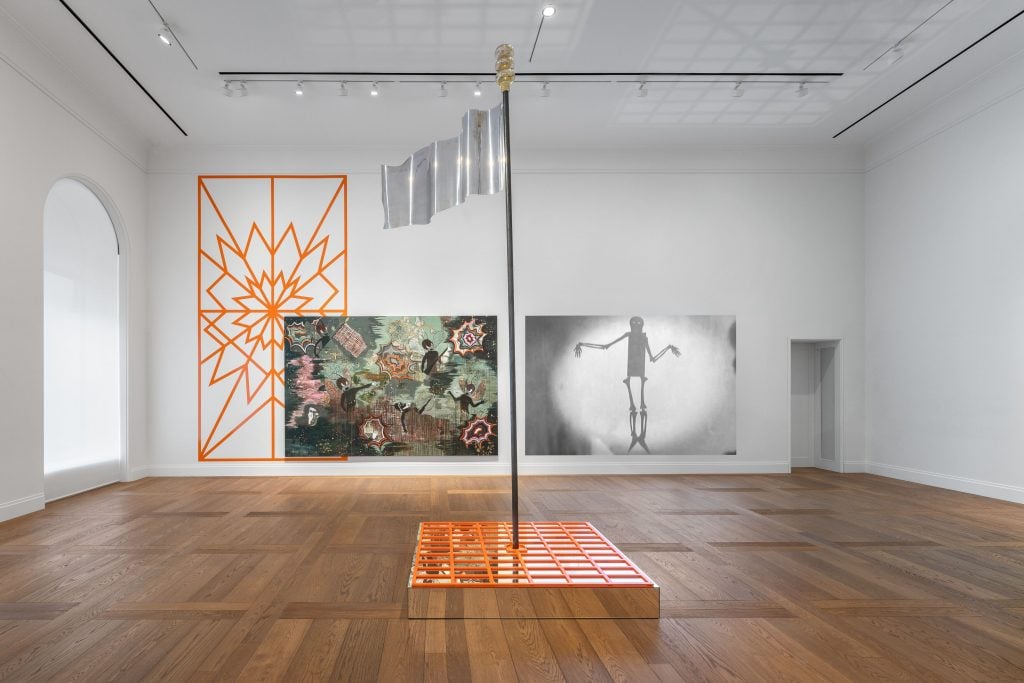
Installation view, “Hélène Delprat. Monster soup” at Hauser & Wirth Paris, 20 January – 9 March © Hélène Delprat, ADAGP, Paris, 2024. Courtesy the artist and Hauser & Wirth. Photo: Nicolas Brasseur
Returning to the art world wasn’t easy. “I didn’t know anyone anymore. It’s really hard, socially, once you’ve left,” she said. “When you disappear, you disappear. It’s like a hole, and you leave no trace. Apart from with your friends.”
It was Gaillard who pulled her back in the ring. He said his early studio visits with Delprat, made on the recommendation of French collector Antoine de Galbert, left him, “more curious than when I had arrived. I saw she has the ability to change lives.” Nevertheless, it took him over a year to convince her to join his young gallery.
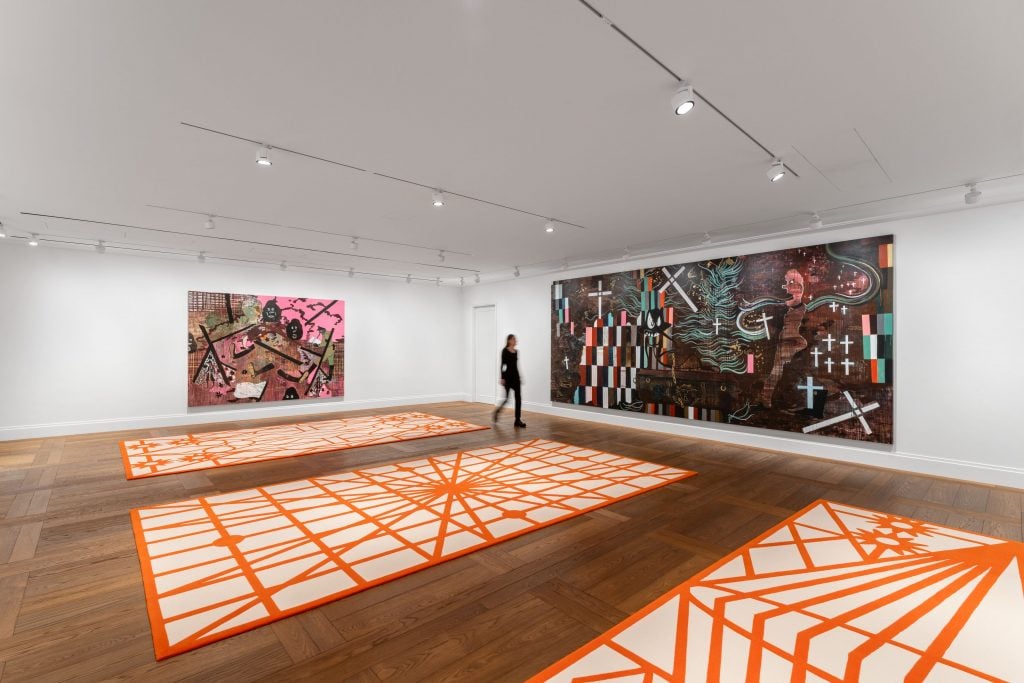
Installation view, “Hélène Delprat. Monster soup” at Hauser & Wirth Paris, 20 January – 9 March © Hélène Delprat, ADAGP, Paris, 2024. Courtesy the artist and Hauser & Wirth. Photo: Nicolas Brasseur
Since that 2014 show with Gaillard, Delprat’s career has been on a steady climb. A 2017 solo exhibit at Antoine de Galbert’s now-closed Maison Rouge, set her on a faster track, with collector Francois Pinault notably acquiring works. She has shown in the Picasso Museum in Barcelona, the Kunsthaus Aargauer in Switzerland, Pinault’s Punta Della Dogana in Venice, and the Kunsthalle Giessen, in Germany, among others. Next, Delprat will participate in the Lyon Biennale starting in September.
The title of her current exhibit comes from an 1820s etching of a woman horrified by monstrous creatures she sees in a magnified drop of water from the Thames River. “She can see there’s all kinds of muck in there—I love it!” enthused Delprat, whose witticisms never miss a beat.
At her desk riddled with clippings, Delprat pointed to details in the etching: a quote by Milton, a part-fish-like creature, her mouth gaping. “I like to look for what you don’t see right away,” she said. In her paintings too, “it’s not about slapping down images. It’s about waiting for them to come.”





